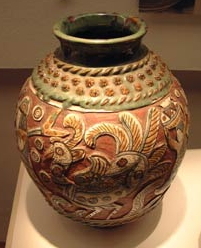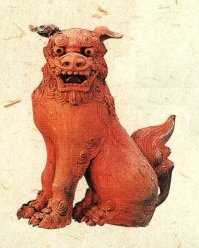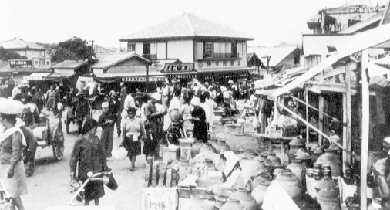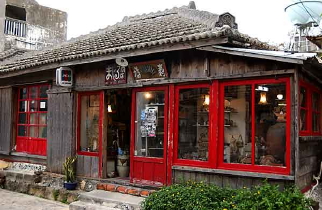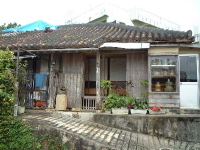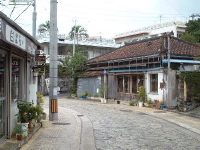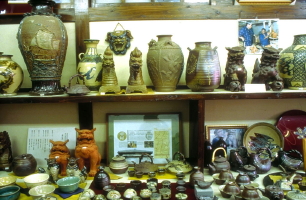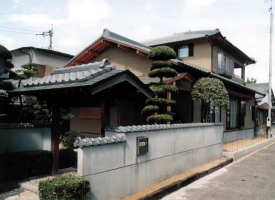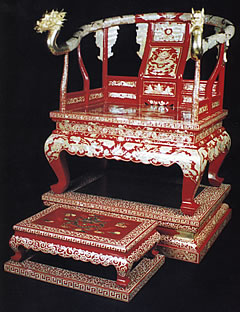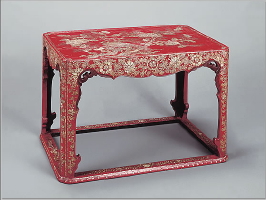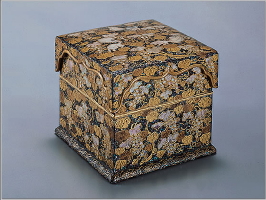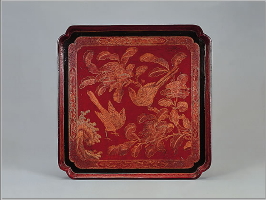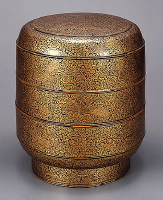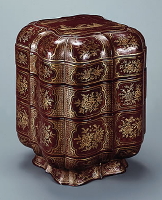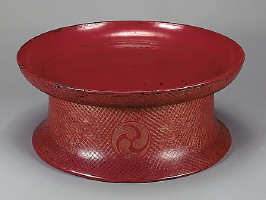Traditional
Crafts
Tsuboya Pottery
In
the second half of the 17th century,
the scattered potteries of Chibana in Misato, Takaraguchi in Shuri
and Wakuta in Naha were brought together by the
King of Ryukyu and a new center was established in what is now Tsuboya.
|
Naha's
Tsuboya district has been the symbol for the island's pottery.
It has produced many famous craftsmen who have gained fame and
reputation far beyond the island. The pottery made in Tsuboya
is known as tsuboya-yaki. During the Taisho and Showa periods
a delegation from the Japan Folkcraft Association visited Tsuboya
to study and produce pottery. They were greatly impressed by
the fact that Tsuboya artisans still cherished the traditional
techniques of manufacturing even while the market was being
negatively impacted by the importation of Japanese porcelain.
This positive re-evaluation by the folkcraft movement helped
in the regaining of confidence and pride by the Tsuboya potters.
Through the years, in spite of the importation of cheaper goods,
the total destruction caused by World War II, and modernization,
Tsuboya has overcome many obstacles and still remains famous
as a center of pottery, and tsuboya-yaki is viewed as a quality
art form throughout the world.
|
Then and now
Click on the
right image to enlarge.
|
The
island's pottery or yamuchin is divided into two large categories,
Joyachi and Arayachi. Joyachi is a glazed
pottery with brightly colored patterns characteristic of the
island, while Arayachi is unglazed. The unglazed ware
is also called Nanbanyaki and the products such as sake
flasks and water jugs are relatively large. Apart from these,
the shiisaa, a mythical lion that is placed on rooftops
across the island is also made along with other pieces of tableware
special to these sub-tropical islands. Today there are 25 firms
employing 100 people, among whom there are 5 government recognized
Master Craftsmen.
|
Click images
to enlarge.
Click images
to enlarge.
For photos from the Tsuboya Pottery Museum
Click
here
Ryukyu
Lacquer
King's
Throne, Shuri Castle
Reconstruction by Koin Maeda,
Prefecturally Recognized Bearer of Important Cultural Properties
Passed down for many generations, the Ryukyuan king's throne,
covered with red Urushi painting and Raden decoration,
using many turban shells from the nearby sea,
was reproduced based on the portrait of King Sho Shin.
This chair was donated by the Sho royal families (Suigyo kai)
to commemorate the reconstruction of Shuri Castle.
|
The
island climate, high in temperature and humidity, creates an
ideal environment for lacquer ware making. The craftsmanship
was adopted from China in the 14th to 15th century, but in the
next two centuries the Ryukyu lacquer ware skill was upgraded
and exported back to China. It further spread to Southeast Asia
as well as mainland Japan. The island's tropical culture is
represented in the tsuikin technique featuring the three
dimensional effect on the print patterns and in pieces with
mother-of-pearl affixed onto lacquer ware. With several different
kinds of techniques, ware based on tropical plants turn into
beautiful art.
|
16th
- 19th Century
Click images
to enlarge.
Click images
to enlarge.
|
Technique
The bright sunshine, "Kuroshio" Black
Current, high-temperature, high-humidity climate, and intense
ultraviolet light are all required for making Ryukyuan lacquerware.
The ancestors of the people of the Ryukyus seem to have known
this very well. Lacquer from the Urushi tree requires
over 80% humidity and a temperature of above 20º for it to dry.
The annual average humidity and temperature on the island match
the required climate conditions. In other areas, lacquerware
production has to be done in a hot bathroom, a circumstance
made artificially to fit the high humidity and temperature.
However, vapor generated from the hot water will make the finished
lacquerware change into a black color and into a brownish red.
In the Ryukyus, where the climate is suitable for drying
Urushi naturally, the oxidization makes normally milky-white
Urushi attain a dark brown color; but, under the strong
ultraviolet light it becomes transparent and turns into an unusually
brilliant vermilion when mixed with cinnabar pigment.
Furthermore,
the turban shell is said to live in the region of the Black
Current, of which the island is the northern limit. The island
produces beautiful shells that were exported to China, Korea
and Japan since the days of the Yayoi Period.
Turban
shells were popular among the Ryukyu's neighboring countries
as a craft material and architectural decoration material. The
beauty of the turban shell was well known in different parts
of the world, including European and Asian countries, since
ancient times. The turban shells provide beautiful vermilion
colors when used to make lacquerware using the Raden
-- mother-of-pearl -- decoration technique. Since the island's
climate is ideally suited for drying Urushi and causing
it to become transparent red, the "Kaizuri Bugyousho"
was established in the 15th century by the administrative office
of the Ryukyu Kingdom in order to create representative artwork
of the Ryukyus, including Raden lacquerware. Production lasted
for 500 years, until the kingdom was abolished upon annexation
into Japan.
|
Coming
soon...
Beautiful Textiles!
LINKS
Virtual
Tours of the Island
Click here
(Select a Tour on the Upper
Left of the page.)
Video
- "Mysterious Okinawa"
Click here
(Scroll down to bottom left.)
Videos and Still Photos of
World Heritage Sites on the island
Click
here
More
photos of the island, with Okinawan music,
at "Mick's Scrapbook,"
a fabulous web site about the island
by a former resident
Click here
History
of the Ryukyu Dynasty
Click here
(Click cancel on the language pop-up.)
Island,
Culture, Festivals
Click
here
Culture,
Arts and Crafts, Cuisine, History,
Folklore, Entertainment,
Out-lying islands and more
Click here
(Click on Menu or Text on the bottom right)
Contemporary
Political Issues of the Island
Click
here
(Click cancel on the language pop-up.)
Meet
my best friend from the island!
Click
here
Return
to Index
Click here
